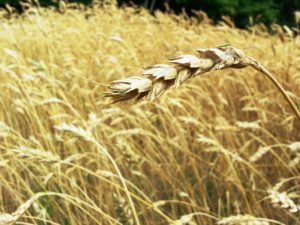June is a time when we are all feverishly working in our gardens, while visions of “vegetable” sugarplums dance in our heads! But, let’s take a few minutes to talk about “grains”.
We certainly would not limit ourselves to just one type of fruit or vegetable, so why do we usually stick with what’s familiar when it comes to whole grains. When I say whole grains, how many of you are thinking about that familiar bowl of oatmeal for breakfast or that whole wheat bread for your sandwich or even the brown rice you serve with chicken?
Did you know that research shows that diets rich in whole grains are associated with reduced risk for diabetes, high cholesterol, heart disease and depression, as well as colon and breast cancer?
So, let’s talk whole grains VS refined grains. You probably know that foods like bread, pasta, rice and cereals are made from grains, but do you know what makes a product “whole grain”? Every grain kernel contains three parts: the bran, germ, and endosperm. Refined grains, like white flour, bread and pasta, have been processed to remove the bran and the germ, which also removes some of the fiber and vitamins. Whole grains contain all three parts and pack a more powerful nutritional punch, so they should make up at least half of your grain consumption, says the USDA.
Just like it’s smart to eat a wide variety of colorful fresh produce, it would also be a good idea to eat plenty of different whole grains. While they’re all versatile and healthy, different types of whole grains will offer a chance to experience a variety of textures, shapes and flavors. Be sure to enjoy your “whole grains”, as well as your fresh fruits and vegetables.
For a list of the tasks that you need to work on in the garden, refer to Summer Gardening Tips: June Action List, June 2015 in our archives.
